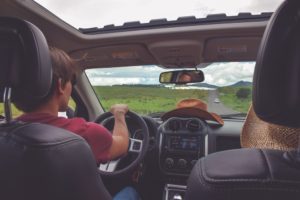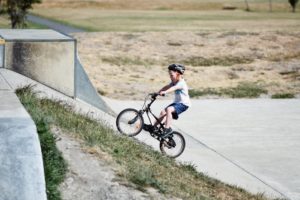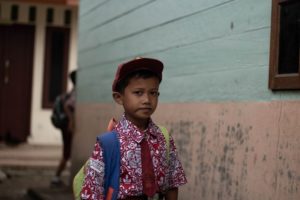According to The Global Health Response to Children & Road Traffic report, road traffic is one of the most neglected issues affecting the wellbeing of young people. The global health crisis is the cause of 350 000 deaths each year and millions of serious injuries.
A shocking number of 227 000 road traffic fatalities are children and adolescents between the ages of 0 and 19. For every death there is a life-changing disability and for every disability, several serious injuries. That’s the equivalent of at least two large schools emptied of children every day.
As if that’s not enough reason to be worried about the safety of our little rascals on the road, the statistics are even worse in South Africa compared to the rest of the world. Children under the age of 18 are twice as likely to be killed on South African roads compared to any other part of the world. “Children are at risk because of their comparatively reduced cognitive abilities. When children cross roads in South Africa, they do not look out for traffic. And when they do, it’s often in the wrong direction”. says Aliasgher Janmohammed, project manager for the Prevention of Injuries Impacting Children in South Africa.
What is SA doing to make a difference?
Several countries throughout the world have adopted “The 4 “E”s strategy”, with South Africa being among them. The country spends over R140 billion on road safety each year.
The 4 E’s are:
- ENFORCEMENT – Follow-up on fines and make sure that the road rules are implemented.
- EDUCATION – Create awareness of road rules and road safety.
- ENGINEERING – Make sure that the roads are maintained, and infrastructure is up to standard.
- EVALUATION – Ask questions and improve on road safety.
What can you do to protect the little ones on the road?
A lot. We share some important safety tips from Parent24:
In the driver's seat

- Don't rush, regardless of whether you’re late or not, avoid going over speed limits (60km/hr – urban roads; 80 km/hr – rural, 120km/hr motorway).
- Be aware of children crossing the street.
- Be sure to pay special attention to your blind spots.
- The Road Transport Management Corporation’s (RTMC) research report of 2016 showed drivers often engage in secondary activities while driving such as looking at, talking with the passenger, eating and grooming. Keep your hands on the wheel and your eyes on the road.
- Wear your seat belt! Seat belts add to safety, reducing the risk of a fatality among front-seat passengers by 40–50% and of rear-seat passengers by between 25–75%.
When biking to school

Teach your kids the following:
- Wear a properly fitted motorcycle helmet. This can help minimise severe injury by 70% and death by 40%.
- Riding in groups with other learners in your neighbourhood helps increase the visibility of riders. Groups can even be led by a teacher, parent or an older student.
- Ride in single file on the side of the road.
- Focus on the road ahead to anticipate obstacles such as potholes, speed bumps, and stationary cars.
- Increase your visibility by wearing a bright colour and be vigilant of other vehicles which may not see you.
When walking to school

Teach your kids the following:
- Walk on the pavement rather than on the road.
- Walk together in groups and wear brightly coloured tops for greater visibility.
- Avoid earphones or texting as these distractions can make you vulnerable to vehicles.
- Be alert: know what is going on around you in terms of cars, people etc.
- Plan your route and use alternative routes which have less traffic.
- When walking alone, keep a safe distance from strangers and avoid confrontation.
- Only cross a road at a designated road crossing and when it is safe to do so.
When taking public transport

Teach your kids the following:
- Avoid overcrowded buses or taxis.
- When disembarking, make sure it is safe to do so and only once the vehicle has come to a complete stop.
- Arrive 5min before scheduled pickup time and stand away from the kerb.
It’s our responsibility as adults to ensure the safety of our children on the roads. Together we can save 227,000 innocent lives!



